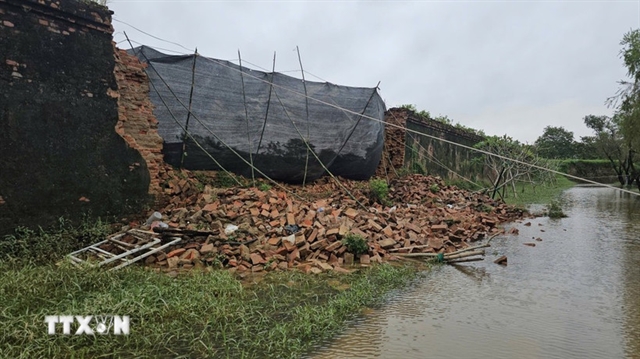 World
World

Hundreds of Philippine rescuers used shovels and their bare hands on Tuesday to sift through a massive landslide where dozens are feared dead in the region worst-hit by deadly Typhoon Mangkhut, as the storm's toll hit 74.
ITOGON, Philippines — Hundreds of Philippine rescuers used shovels and their bare hands on Tuesday to sift through a massive landslide where dozens are feared dead in the region worst-hit by deadly Typhoon Mangkhut, as the storm’s toll hit 74.
The storm, 2018’s most powerful, smashed homes and flooded key agricultural regions in the northern Philippines before battering Hong Kong and southern mainland China with fierce winds and heavy rain. Hong Kong was still struggling to get back on its feet on Tuesday with a massive clean-up operation to clear broken trees, repair torn-up roads and fix damaged power lines.
The violent typhoon killed four in China’s southern province of Guangdong and the toll climbed on Tuesday to 74 on the Philippines’ northern Luzon island according to police, with that number expected to rise.
Up to 40 people are still feared buried in the landslide in Itogon, unleashed on Saturday as the typhoon stalled over the area and dumped a month’s worth of rain in a matter of hours.
"While I said there is a 99-per cent chance that all of them are dead, there is still that one-per cent chance," local Mayor Victorio Palangdan said.
"The rescue effort will continue until the president orders us to stop," he said.
Because the slide destroyed roads, authorities have been unable to bring heavy equipment into the area to accelerate the search. As a result the teams were using human chains to extract debris.
The area was primed for disaster before Mangkhut hit, as it came on the heels of nearly a month of continuous monsoon rains that left the already hazardous area soggy and dangerously loose.
Almost all the storm’s victims were killed in dozens of landslides unleashed along the Cordillera mountain range, a key gold mining area.
’King of storms’
Many of those buried in Itogon were small-scale gold miners and their families who took refuge in a building abandoned by large mining firm.
The Philippines has a poor record of regulating mining, with tunnel collapses and landslides in recent years regularly killing people in other gold-rush areas.
Tearful families surrounded a whiteboard bearing names of the dead and missing as others inspected recovered bodies in an attempt to identify their loved ones.
"We found peace that his body has been found. We can’t really do anything, it was an accident. Maybe this is God’s will," Teresa Buucan said after her nephew’s corpse was pulled from the debris.
Across northern Luzon, which produces much of the nation’s rice and corn, farms were under muddy floodwater. Farmers were seeing what of their crops could be saved, however, it appears the losses will total more than US$100 million.
That could add to the Philippines’ inflation woes and worsen a spike in rice prices that has hit hard for the nearly quarter of the nation’s population that survives on less than $2 a day.
In Hong Kong, which was whacked with gusts of more than 230km per hour that sent buildings swaying and water surging into homes and shopping malls, workers were still busy cleaning up the damage.
After a day of transport chaos in the immediate aftermath of the storm, schools were closed for a second day as authorities worked to restore rail and bus services.
At the height of the deluge, windows in tower blocks and skyscrapers were smashed as people cowered inside, and some roads were waist-deep in water.
The government of the high-rise city described the damage as "severe and extensive" with more than 300 people injured.
The storm made landfall in mainland China late on Sunday, killing four in Guangdong including three hit by falling trees.
Authorities there had evacuated more than three million people and ordered tens of thousands of fishing boats back to port before the arrival of what Chinese media dubbed the "King of Storms". — AFP




